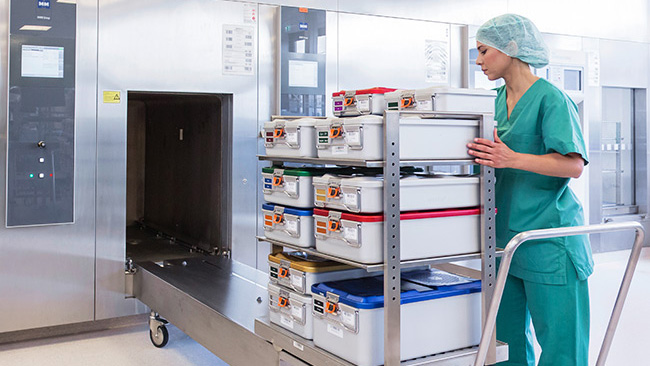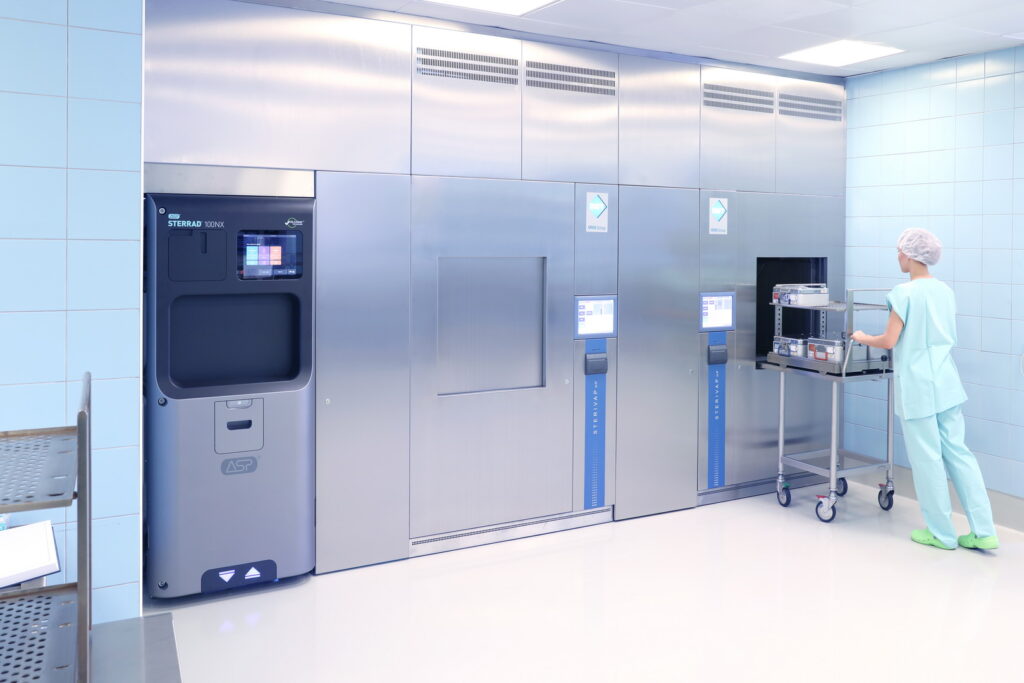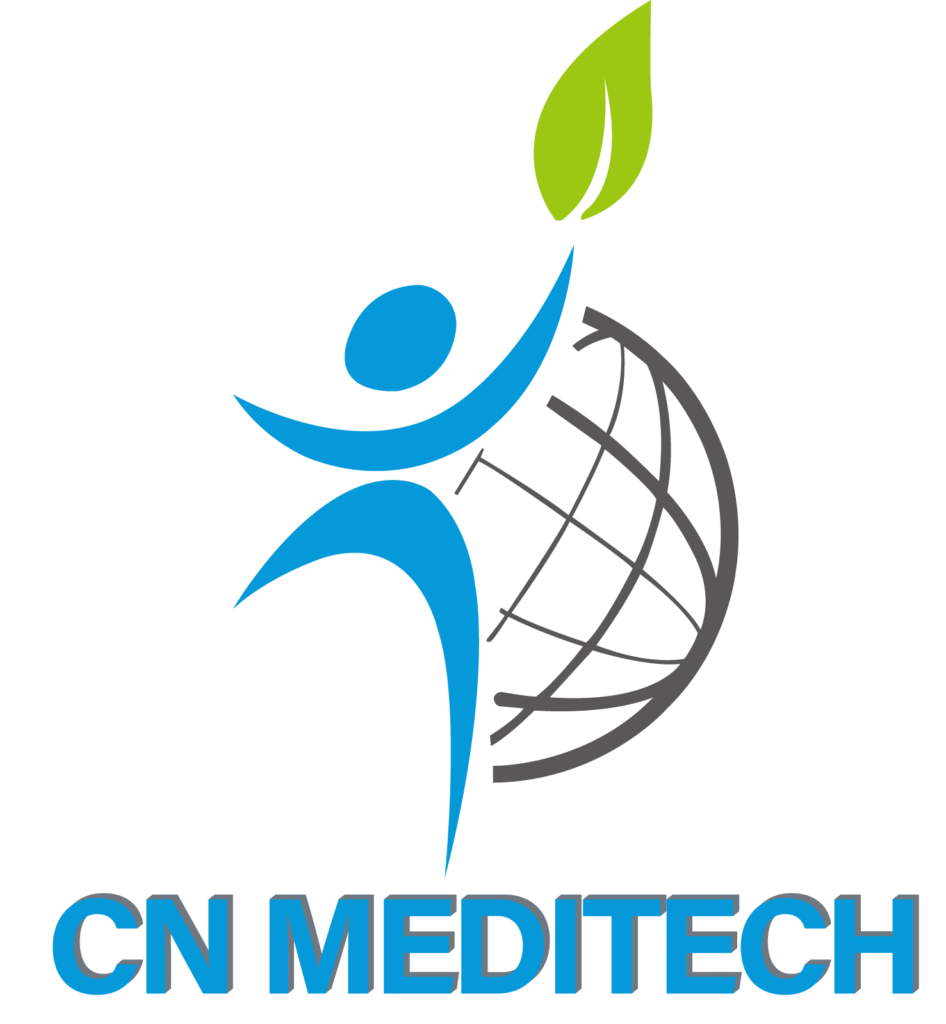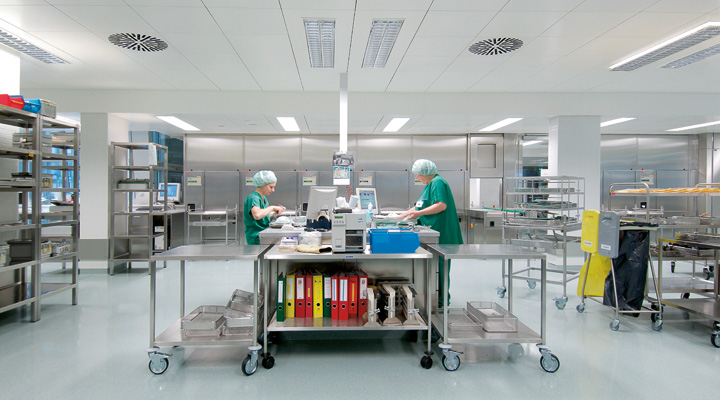Introduction
The hospital disinfection supply center is an important part of the hospital. It is responsible for the cleaning, disinfection and sterilization of reusable instruments and items in all departments of the hospital. At the same time, it provides sterile supplies to various departments to ensure the medical safety of the entire hospital. The work of the disinfection supply center affects the occurrence of hospital infection, and also affects the service quality of the hospital and the safety of patients. It can be seen that the disinfection supply center plays an important role in the normal operation of the hospital.
Work content
The hospital disinfection supply center supplies sterile items and equipment to various clinical departments in the hospital to ensure the normal operation of various departments of the hospital, which also affects the infection rate of the hospital. In addition, the work of the disinfection supply center also includes the recovery, classification, cleaning, disinfection, packaging, sterilization and distribution of reusable instruments in various clinical departments. In daily work, the staff of the hospital disinfection supply center also need to manage sterile items, do a good job in cleaning and disinfection and sterilization effect monitoring, communicate and cooperate with clinical departments, and assume the responsibility of preventing and controlling hospital infections and occupational exposure.
Principles of disinfection and sterilization
1. Medical supplies that enter human tissues or sterile organs must be sterilized, and instruments and supplies that come into contact with skin and mucous membranes must be disinfected.
2. Used medical devices and items should be cleaned of dirt and thoroughly cleaned before disinfection or sterilization. Some instruments and items used by patients with infectious diseases should be disinfected and thoroughly cleaned before disinfection or sterilization. All medical devices should be disinfected or sterilized before maintenance.
3. Disinfection and sterilization methods can be divided into physical or chemical methods based on the characteristics of medical devices and items. Some heat-resistant and moisture-resistant surgical instruments and items, various puncture needles, etc. are preferably sterilized by high-temperature pressure steam; oils, powders, ointments, etc. are preferably sterilized by dry heat. Chemical sterilization can be used for heat-resistant items such as precision instruments and artificial implants.
4. When using chemical sterilization disinfectants, you must understand the properties, effects, usage methods, and factors affecting the sterilization effect of the disinfectant. When preparing, attention should be paid to the effective concentration, and regular monitoring should be carried out according to regulations. When replacing the sterilizing agent, the container for soaking the sterilized items needs to be sterilized.
5. Some equipment that is used continuously must be disinfected after each use, and also need to be disinfected after use, and stored in a dry place.

Commonly used disinfection and sterilization methods
Sterilization refers to the process of killing or removing all microorganisms (including bacterial spores) on the transmission medium. At present, the commonly used sterilization methods in hospital disinfection supply centers are mainly: pressure steam sterilization, ethylene oxide, hydrogen peroxide low-temperature plasma, low-temperature formaldehyde sterilization, etc.
Disinfection refers to killing or removing pathogenic microorganisms on the transmission medium to make it harmless, but it cannot kill bacterial spores. Disinfection methods can be divided into high-level disinfection methods, medium-level disinfection methods and low-level disinfection methods.
High-level disinfection methods, that is, killing all bacterial propagules, including viruses, mycobacteria, fungi and their spores, and most bacterial spores. The most commonly used methods mainly include the use of chlorine dioxide, hydrogen peroxide, ozone, chlorine-containing preparations, o-phthalaldehyde, peracetic acid, iodine tincture, etc., as well as chemical disinfectants that can achieve sterilization effects, under specified conditions, at appropriate concentrations and effective action time.
Medium-level disinfection methods, that is, killing various pathogenic microorganisms other than bacterial spores, including mycobacteria. Commonly used methods include the use of iodine disinfectants such as iodine tinctures, chlorhexidine iodine, alcohol and chlorhexidine compounds, alcohol and quaternary ammonium salt compounds, phenols and other disinfectants, under specified conditions, at appropriate concentrations and effective effects.
Low-level disinfection methods, chemical disinfection methods that can kill bacterial propagules and lipophilic viruses, as well as mechanical sterilization methods such as ventilation, flushing, etc. Including disinfection methods using disinfectants such as biguanides such as chlorhexidine and quaternary ammonium salts such as benzalkonium bromide.
How does the disinfection supply center handle instruments?
When the disinfection supply center disposes of some reusable inspection, treatment or surgical instruments, it first needs to go through the inventory and classification table to count the number of recovered instruments, check the list and classify them. After the check is completed, they need to be cleaned at the initial washing table. The staff manually cleans the instruments and removes some visible dirt on the instruments in running water. After rinsing, soak them in a 1:270 multi-enzyme cleaning solution to quickly decompose the residual protein, inorganic and organic matter on the instruments without corrosive to the instruments.
Some instruments with more complex structures need to be carefully disassembled before cleaning, and then soaked in perfusion for a long time. After manual cleaning, medical devices need to be fully cleaned and disinfected in a fully automatic cleaning and disinfection machine, through a series of procedures including pre-washing, washing, rinsing, final rinsing, disinfection, lubrication and drying. After cleaning and disinfection, the instruments are packaged. During this process, the staff needs to visually inspect the cleanliness and functional integrity of the instruments or under a magnifying glass with a light source. After strict review, the instruments are packaged and labeled. The label content includes the instrument name, department of use, sterilization date, expiration date, packager, and auditor. After packaging, the pressure steam sterilizer is used for sterilization. After pulsation, heating, sterilization, exhaust, drying, and emptying, the microorganisms on the instruments are killed. Finally, the instruments enter the sterile storage area. After passing the physical monitoring, chemical monitoring, and biological monitoring, the distribution personnel will check the integrity of the outer packaging again.
Sterile items that pass the inspection can be placed in the clean compartment and sent to the department and operating room. The disinfection supply center can be divided into a working area and an auxiliary area. The working area includes a decontamination area, an inspection and packaging sterilization area, and a sterile item storage area. The decontamination area recycles, sorts, cleans, disinfects, lubricates and dries reusable items; the inspection and packaging sterilization area is used for the packaging and preparation of qualified items that have been cleaned and disinfected. Processing area: sterile item storage area, used for the storage and distribution of sterilized items and disposable sterile equipment without outer packaging.
Some people compare the hospital’s disinfection supply center to the “heart” of the hospital, which shows the importance of the disinfection supply center. As an important place for supplying all sterile equipment in the hospital, the quality of its work directly affects the quality of medical care. Therefore, the staff of the disinfection supply center need to follow the principles of disinfection and sterilization, ensure the quality of disinfection, and pay attention to the details of the work to reduce infection problems and ensure the normal operation of the hospital.

Why Choose Us?

CNMEDITECH is dedicated to the long-term research of the medical equipment market. Our mission is “People oriented and win-win strategy,Matching the real needs of the region with a focus on human health,To be the world’s first-class medical field solution expert”.We have been manufacturing high-quality medical device products for more than ten years.
We have built our reputation on delivering quality healthcare solutions on time and on budget.All our products comply with international health and safety regulations and all products come with a warranty.
Are you still worrying about your customer’s product needs?Are you still angry that the product is expensive? We have various medical equipment and support personalized product customization.
Our company has many styles to choose from.In addition, we have high-quality pre-sales consulting guidance and professional after-sales service, all to meet your needs.
Whether it is a cost-effective or high-end product, there will always be something suitable for you.If you have any needs for products, you can ask us, our factory will meet your needs as soon as possible, and we will make every effort to provide you with solutions.Feel free to send us your inquiries.








